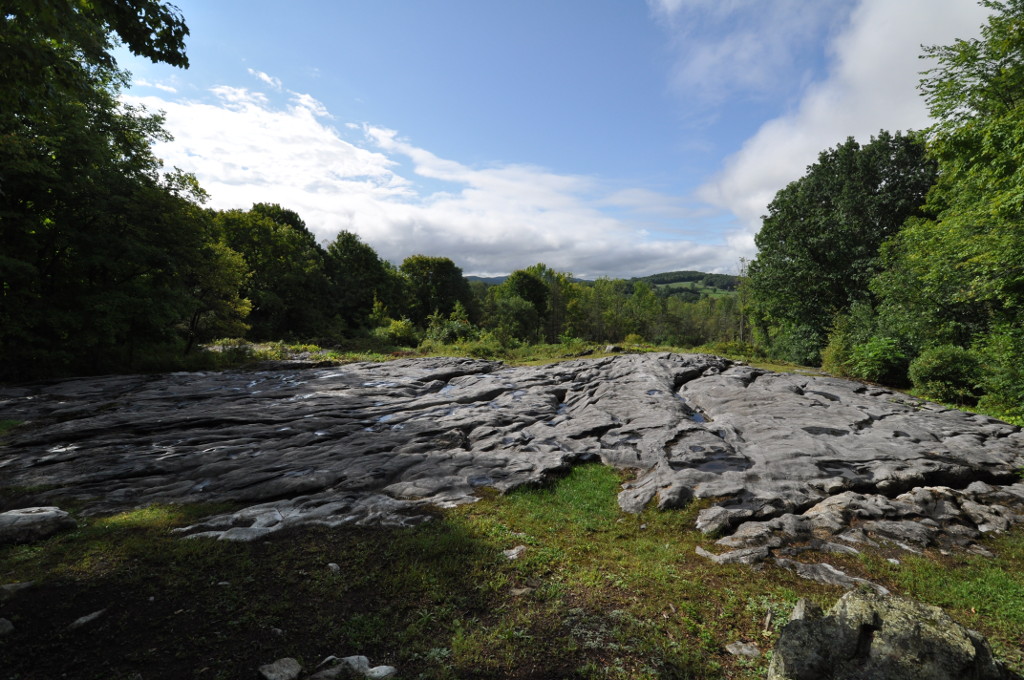|
Adventurers (Seventh-day Adventist)
The Adventurer Club is a program for young children created by the Seventh-day Adventist Church (SDA) in 1972, similar to Scouting. Inspired by its "older brother", the Pathfinder Club, the Adventurer Club is a program focused on education of children aged 6–9 years with additional sections for children ages 4 and 5. The Adventurers program is designed to support parents in raising their children in wisdom and stature in favour with God and men. The club recognises the parents as the primary teachers of their children and key people in the children’s lives to lead the children to Jesus. History The club was founded in 1972. In 1988, the invited interested associations and experts in children to study and improve the design of the Adventurer Club. A committee met a year later (1989) to update the curriculum and specialties, and establish standards for the organization and how the club should function. Leaders participating in this work included Sabbath School Children, educ ... [...More Info...] [...Related Items...] OR: [Wikipedia] [Google] [Baidu] |
Seventh-day Adventist Church
The Seventh-day Adventist Church (SDA) is an Adventist Protestant Christian denomination which is distinguished by its observance of Saturday, the seventh day of the week in the Christian (Gregorian) and the Hebrew calendar, as the Sabbath, its emphasis on the imminent Second Coming (advent) of Jesus Christ, and its annihilationist soteriology. The denomination grew out of the Millerite movement in the United States during the mid-19th century, and it was formally established in 1863. Among its co-founders was Ellen G. White, whose extensive writings are still held in high regard by the church. Much of the theology of the Seventh-day Adventist Church corresponds to common evangelical Christian teachings, such as the Trinity and the infallibility of Scripture. Distinctive eschatological teachings include the unconscious state of the dead and the doctrine of an investigative judgment. The church emphasizes diet and health, including adhering to Jewish dietary l ... [...More Info...] [...Related Items...] OR: [Wikipedia] [Google] [Baidu] |
Scouting
Scouting or the Scout Movement is a youth social movement, movement which became popularly established in the first decade of the twentieth century. It follows the Scout method of informal education with an emphasis on practical outdoor activities, including camping, woodcraft, aquatics, hiking, Backpacking (wilderness), backpacking and sports. A widely recognized movement characteristic is the Scout uniform, by intent Social hierarchies, hiding all differences of social standing and encouraging Social equality, equality, with neckerchief (known as a scarf in some countries) and (originally) a campaign hat or comparable Headgear, headwear. Distinctive insignia include the World Scout Emblem, fleur-de-lis as well as Scout badge, merit badges or patches. In some countries, Girl Guides organizations, using a trefoil insignia, exist for girls to carry-out scout training. Other programs for children who are too young to be Scouts and take the Scout Promise, such as Wolf Cubs or Cub ... [...More Info...] [...Related Items...] OR: [Wikipedia] [Google] [Baidu] |
Pathfinders (Seventh-day Adventist)
The Pathfinder Club, or simply Pathfinders, is a department of the Seventh-day Adventist Church (SDA), which works specifically with the cultural, social and religious education of children and teens. Children 10 years to 15 are eligible to become members of the club as students.Teens and adults older then 15 can become teachers and assistant teacher. Though similar in many respects to Scouting, Pathfinders have a stronger religious emphasis. The Pathfinder Club has been an official component of the SDA church's youth ministry since 1950. The current director of the program is Andrés J. Peralta. An estimated 38% of Adventist youth under the age of 18 "Are members of Pathfinders or a similar church-sponsored youth group", according to a 2002 worldwide survey of local church leaders. History The first step towards the organization of the Pathfinders Club within the Adventist Church in 1907 when the Department of Youth Missionary Volunteer (Volunteer Missionary Society) wa ... [...More Info...] [...Related Items...] OR: [Wikipedia] [Google] [Baidu] |
Sabbath School
Sabbath school is a function of the Seventh-day Adventist Church, Seventh Day Baptist, Church of God (Seventh-Day), and some other sabbatarian denominations, usually comprising a song service and Bible study lesson on the Sabbath. It is usually held before the church service on Saturday morning, but this may vary. It includes programs that are Bible-based to foster Christian growth and include study of the Bible. Activities Sabbath school usually begins on Saturday mornings before the worship service starts. The Sabbath school service for adults typically has two portions. The first portion begins with a song service, followed by a mission emphasis and a short talk. The second, and larger portion, is the lesson study. Different churches conduct Sabbath school in many ways, mostly teaching on the same topic or reading in a given week, as each quarter of the year has a different theme that reflects Bible, doctrinal, or church lifestyle teachings. The lesson booklet is ca ... [...More Info...] [...Related Items...] OR: [Wikipedia] [Google] [Baidu] |
General Conference Of Seventh-day Adventists
The Seventh-day Adventist Church (SDA) is an Adventist Protestant Christian denomination which is distinguished by its observance of Saturday, the seventh day of the week in the Christian (Gregorian) and the Hebrew calendar, as the Sabbath, its emphasis on the imminent Second Coming (advent) of Jesus Christ, and its annihilationist soteriology. The denomination grew out of the Millerite movement in the United States during the mid-19th century, and it was formally established in 1863. Among its co-founders was Ellen G. White, whose extensive writings are still held in high regard by the church. Much of the theology of the Seventh-day Adventist Church corresponds to common evangelical Christian teachings, such as the Trinity and the infallibility of Scripture. Distinctive eschatological teachings include the unconscious state of the dead and the doctrine of an investigative judgment. The church emphasizes diet and health, including adhering to Jewish dietary law, a ... [...More Info...] [...Related Items...] OR: [Wikipedia] [Google] [Baidu] |
Medical Cadet Corps
The Medical Cadet Corp (MCC) is a program of the Seventh-day Adventist Church. It started in the 1930s in the United States with the intention of preparing young men of draft age for military service in noncombatant roles. The training included drill, first aid, military courtesies, organization of medical corps, defense against chemical warfare, principles of anatomy and physiology, physical exercises and character development. The program was temporarily suspended at the end of World War II. It was reactivated in 1950 then a few years after was adapted internationally. The program was deactivated by the General Conference of Seventh-day Adventists in early 1972 but continued independently in a few locations with an emphasis on rescue and disaster response. In 2016, the Medical Cadet Corps, a component of the World Service Organization that is under the umbrella of the General Conference Department of Adventist Chaplaincy Ministries, was reactivated as a worldwide program. Bac ... [...More Info...] [...Related Items...] OR: [Wikipedia] [Google] [Baidu] |
History Of The Seventh-day Adventist Church
The Seventh-day Adventist Church had its roots in the Millerite movement of the 1830s to the 1840s, during the period of the Second Great Awakening, and was officially founded in 1863. Prominent figures in the early church included Hiram Edson, Ellen G. White, her husband James Springer White, Joseph Bates, and J. N. Andrews. Over the ensuing decades the church expanded from its original base in New England to become an international organization. Significant developments such the reviews initiated by evangelicals Donald Barnhouse and Walter Martin, in the 20th century led to its recognition as a Christian denomination. Foundations, 1798–1820s The Second Great Awakening, a revival movement in the United States, took place in the early 19th century. The Second Great Awakening was stimulated by the foundation of the many Bible Societies which sought to address the problem of a lack of affordable Bibles. The spread of Bibles allowed many who had not had one to be abl ... [...More Info...] [...Related Items...] OR: [Wikipedia] [Google] [Baidu] |
Christian Non-aligned Scouting Organizations
A Christian () is a person who follows or adheres to Christianity, a monotheistic Abrahamic religion based on the life and teachings of Jesus Christ. Christians form the largest religious community in the world. The words ''Christ'' and ''Christian'' derive from the Koine Greek title (), a translation of the Biblical Hebrew term ''mashiach'' () (usually rendered as ''messiah'' in English). While there are diverse interpretations of Christianity which sometimes conflict, they are united in believing that Jesus has a unique significance. The term ''Christian'' used as an adjective is descriptive of anything associated with Christianity or Christian churches, or in a proverbial sense "all that is noble, and good, and Christ-like." According to a 2011 Pew Research Center survey, there were 2.3 billion Christians around the world, up from about 600 million in 1910. Today, about 37% of all Christians live in the Americas, about 26% live in Europe, 24% live in sub-Saharan Africa, ab ... [...More Info...] [...Related Items...] OR: [Wikipedia] [Google] [Baidu] |
Religious Service Organizations
Religion is a range of social-cultural systems, including designated behaviors and practices, morals, beliefs, worldviews, texts, sanctified places, prophecies, ethics, or organizations, that generally relate humanity to supernatural, transcendental, and spiritual elements—although there is no scholarly consensus over what precisely constitutes a religion. It is an essentially contested concept. Different religions may or may not contain various elements ranging from the divine, sacredness, faith,Tillich, P. (1957) ''Dynamics of faith''. Harper Perennial; (p. 1). and a supernatural being or beings. The origin of religious belief is an open question, with possible explanations including awareness of individual death, a sense of community, and dreams. Religions have sacred histories, narratives, and mythologies, preserved in oral traditions, sacred texts, symbols, and holy places, that may attempt to explain the origin of life, the universe, and other phenomena. Religious ... [...More Info...] [...Related Items...] OR: [Wikipedia] [Google] [Baidu] |





